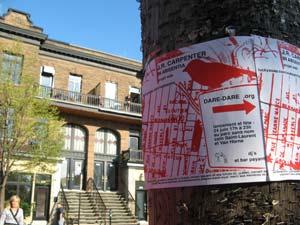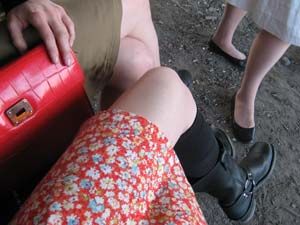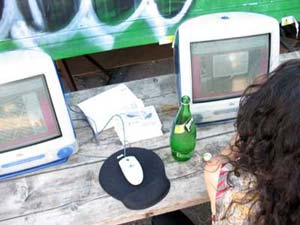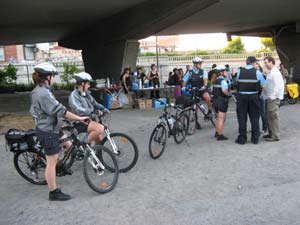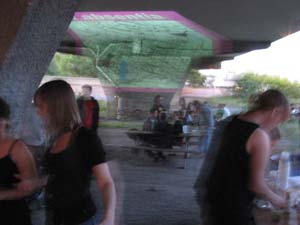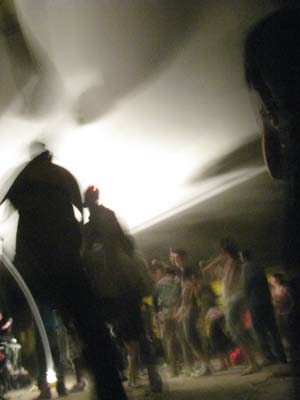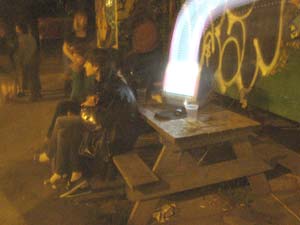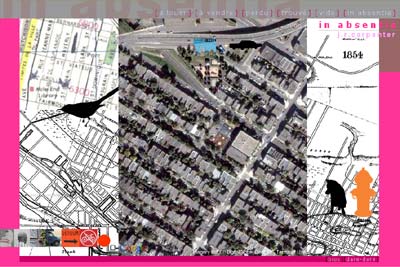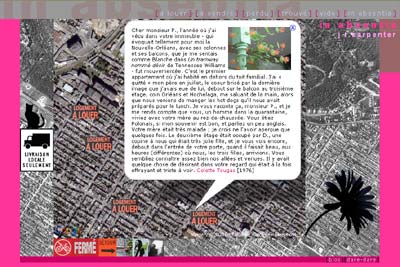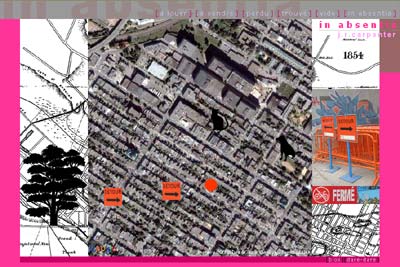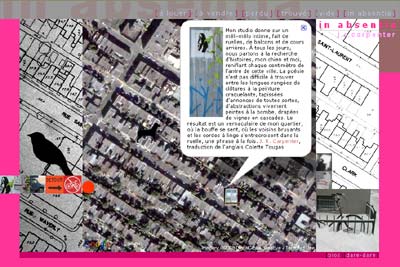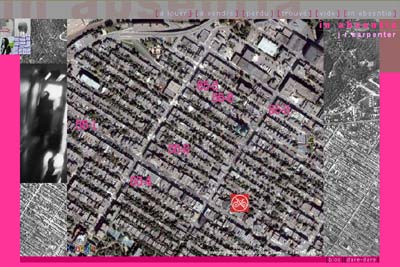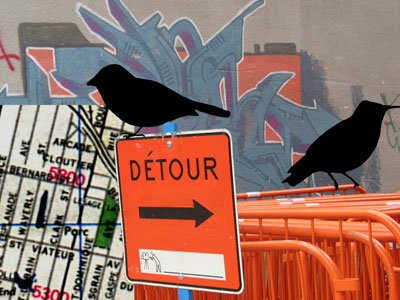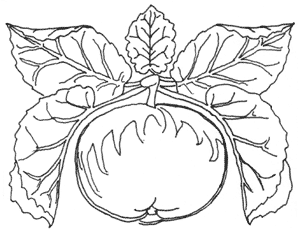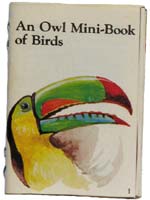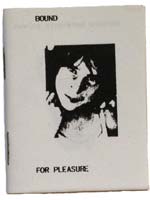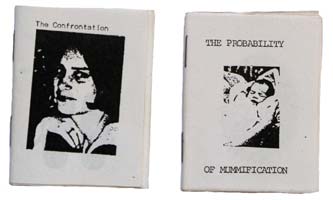To celebrate the creative energy that has been flowing through OBORO over the past 25 years and, most of all, to express our deep gratitude to our community, artists and partners, we are organizing a great party with an opening banquet, performances, a garden-exhibition, a day for children, an art auction, an outdoor ceremony and many more surprises.
Let the festivities begin… and continue!
Banquet and Gallery Opening
Saturday, April 18, 2009, at 5pm
You are invited to a banquet launching our 25th anniversary festivities! Join us in celebrating the creative energy that has been flowing through OBORO over the past 25 years as we express our deep gratitude to our community, artists and partners.
Spring winds have breezed into our preparations: on the night of April 18th, OBORO completes its transformation into a lush and cheerful garden. Multicoloured platters will carry succulent fragrances and exquisite morsels as an offering to guests and friends. Throughout the evening, bustling performances, sparks of music and magical winks will flutter by, and each visitor will receive a special edition work created for the occasion.
Masters of Ceremony: Pierre Beaudoin and Claudine Hubert
Opening banquet performers: Yves Alavo and Mehdi Benboubakeur, Choeur Maha, Raf Katigbak, Cheryl Sim, Roger Sinha, Ziya Tabassian
Oboros’ Art Auction
Saturday, April 18, 2009, 5pm to 11pm
The works created for the exhibition will be on auction from 5pm to 11pm on Saturday April 18th. Proceeds of all sales will go towards OBORO’s endowment fund, created so that OBORO can continue its significant support of artists and the art community over the years to come. For a sneak peek of the works you’ll have a chance to bid on, visit: oboros album
Exhibition
Saturday, April 18, 2009 – Saturday, May 2, 2009
From April 18th to May 2nd, the gallery will be transformed into a luxuriant garden, populated with oboros grown from the imagination of more than a hundred artists. While meandering through the exhibition, visitors will discover surprising and engaging works of every stripe and be offered a flavourful cup of hot tea served by no less than the world-famous “Trolley Bus,” master of ceremonies of the World Tea Party. And somewhere in the middle of the garden safari, the small exhibition room will await inspired visitors who wish to create their own oboro.
Children’s Day
Saturday, April 25, 2009, at 2pm
On Saturday, April 25, from 2pm to 4pm, parents and children are invited to drop by the workshop and create an oboro in the company of a facilitator. In order to rejuvenate creative perspectives and quicken critical eyes, the children, following their whims, will offer guided tours of the exhibit to the adults.
Performance by Claude-Marie Caron
Saturday, April 25, 2009, at 4pm
Inspired by Lautréamont’s famous words “beautiful as the fortuitous encounter of an umbrella and a sewing machine on a dissection table,” Beau comme is constructed as an allegorical self-portrait of Claude-Marie Caron as he celebrates 25 years of OBORO. Inventor of the name and member of OBORO’s first Board of Directors, Claude-Marie Caron is a multidisciplinary artist, a performer, a tailor and a master-teacher of Tai-Chi.
Closing Ceremony
Saturday, May 2, 2009, at 3pm
at La Fontaine Park (corner of Rachel and Parc-La Fontaine)
For the Closing Ceremony, OBORO’s garden relocates to Parc La Fontaine, where everyone is invited to join for an outdoor picnic and to attend a planting of a tree in the parc. As an inspiration to future decades and an offering to the community, this tree encompasses OBORO’s mission: to contribute to our collective heritage and to a culture of peace.
Manifestoboro
For the 25th Anniversary, artists and close collaborators of OBORO have banded together to create the Manifestoboro, a collaborative nursery-rhyme/drawing/poem/manifesto for your pleasure and inspiration:
OBORO est un salon
OBORO is peace
OBORO is possibility
OBORO est un souffle
OBORO is an art family
OBORO est alimentaire
OBORO est l’arbre et la forêt
OBORO est un terrain de jeu
OBORO est un processus in process
OBORO is an ocean-in-motion
OBORO is a very old jade plant
OBORO est une tête chercheuse
OBORO is a big table in the sunlight
OBORO is a series of concentric circles
OBORO is living art, looking and listening
OBORO est tout ce qui n’est pas OBORO
OBORO is a bucket of toys waiting for kids
OBORO est un gâteau d’anniversaire rose et jaune
OBORO is a refreshing cup of tea served up in porcelaine
OBORO is food for thought and a feast for the eyes
OBORO is curious, challenging, déroutant et impromptu
OBORO est un « o » entre deux « o », un grand cercle, un oeil
OBORO est le lieu où se décline gracieusement ou furieusement le temps
OBOROBOROBORO
OBORO de vie
Download the Manifestoboro (pdf)
OBORO’S 25th ANNIVERSARY FUNDRAISING CAMPAIGN
Make a donation and receive an official receipt for income tax purposes!
For each dollar raised between now and July 30, 2009, OBORO will receive an additional $2,50!
Thanks to the support of the Placements Culture program at the Conseil des arts et des lettres du Québec and the Canadian Arts and Sustainability Program of the Department of Canadian Heritage. All proceeds will go towards OBORO’s endowment fund to help us continue supporting artists and the art community over the years to come.
. . . . .
